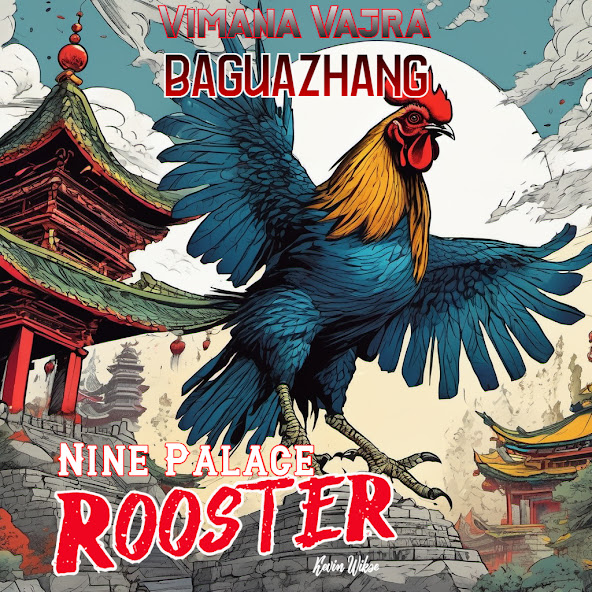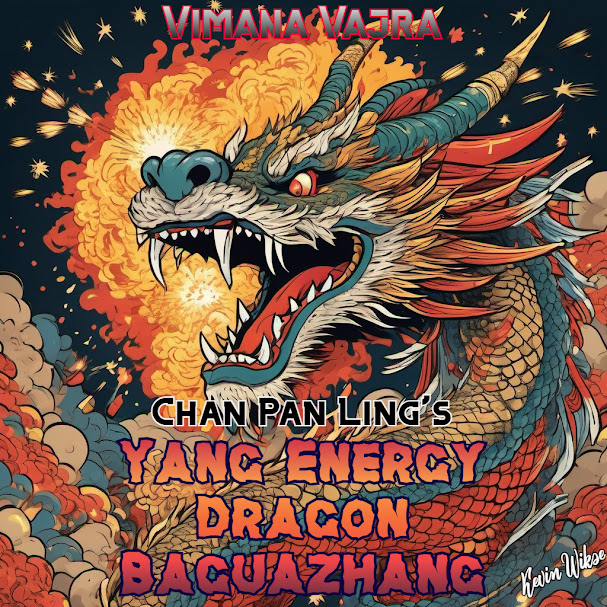Baguazhang: Nine Palace Rooster by Kevin Wikse.

Birthed from the Fire Gua or Trigram of the I-Ching, Rooster Shape Baguzhang is an animistic personification of fire. Explosive, quick, and always moving, the action of the Rooster is that of a flame's ability to leap to new and nearby sources of fuel. The Rooster hops and struts like the pops and snaps of a long string of firecrackers; each step and movement of the Rooster is sharp, fast, and powerful. The Fire Gua or Trigram of the I-Ching is drawn as two unbroken yang lines, top and bottom, with a split ying line sandwiched between them, which denotes the idea that fire possesses qualities of circling and clinging, spiraling around and engulfing its fuel sources. Even while expanding outward, the fire's primary movement is upward (if only to generate power for the downward). The Rooster is the same, utilizing rapid spiral stepping, launching kicks, knees, palm strikes, palm/backhand whips (mimicking a rooster's wings flapping), slicing elbows, and chopping strikes up a...



